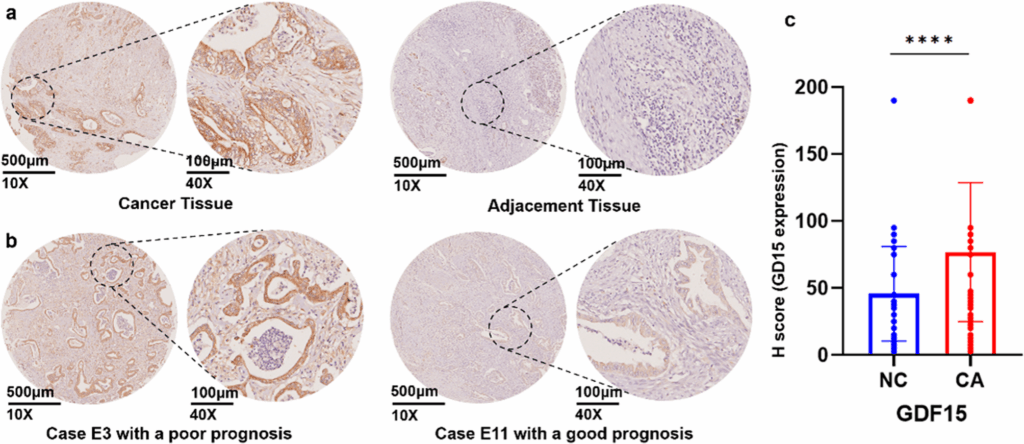
In a groundbreaking study, researchers have identified Growth Differentiation Factor 15 (GDF15) as a promising biomarker for predicting survival in patients with pancreatic ductal adenocarcinoma (PDAC). This discovery could pave the way for more accurate prognostic assessments and potentially improve treatment outcomes for one of the deadliest forms of cancer. The study, conducted at Peking Union Medical College Hospital, involved a comprehensive analysis of clinicopathological data and GDF15 expression profiles from a retrospective clinical cohort.
The significance of this research lies in its potential to address the poor prognosis associated with PDAC, which remains the fourth leading cause of cancer-related deaths in the United States. The five-year survival rate for this aggressive cancer is a mere 13%, largely due to late-stage diagnosis and limited effective treatment options.
Understanding Pancreatic Ductal Adenocarcinoma
Pancreatic ductal adenocarcinoma is notorious for its aggressive nature and late detection. The absence of early clinical symptoms often results in diagnosis at an advanced stage, when treatment options are limited. Currently, CA19-9 is the standard biomarker used for PDAC detection, but its lack of specificity and reliability has prompted the search for additional markers.
According to the study, GDF15, a member of the transforming growth factor β (TGFβ) superfamily, has emerged as a potential game-changer. Previous research has shown its diagnostic and prognostic value in other malignancies such as prostate, endometrial, and gastric cancers.
Research Methodology and Findings
The study involved the collection and analysis of tissue samples from 375 patients who underwent surgery for PDAC. The researchers employed immunohistochemical staining to quantify GDF15 expression in these samples. A prognosis-oriented threshold was used to stratify expression levels, and Kaplan-Meier survival analysis evaluated the association between GDF15 levels and overall survival.
Results indicated that GDF15 was significantly overexpressed in PDAC tissues compared to adjacent normal pancreatic tissues. High levels of GDF15 were linked to poorer clinical outcomes, reinforcing its potential as a prognostic indicator.
“Patients with high GDF15 expression had significantly shorter overall survival than those with low expression,” the study noted, highlighting the potential clinical utility of GDF15 in guiding treatment decisions.
The Implications of GDF15 in Cancer Prognosis
The identification of GDF15 as a prognostic biomarker could revolutionize the management of pancreatic cancer. It offers a more specific alternative to CA19-9, potentially enabling earlier detection and more personalized treatment strategies. Moreover, the study’s findings could stimulate further research into the biological mechanisms underlying GDF15’s role in cancer progression.
Experts suggest that GDF15’s involvement in the TGFβ signaling pathway might be a key factor in its prognostic capabilities. This pathway is known to play a crucial role in cancer development and progression, offering potential targets for therapeutic intervention.
Future Directions and Research Considerations
While the study provides compelling evidence of GDF15’s prognostic value, the authors acknowledge certain limitations. The narrowly defined patient cohort may limit the generalizability of the findings, and further research involving larger, more diverse populations is necessary to validate these results.
Additionally, the study highlights the need for further exploration of the downstream mechanisms of GDF15 in pancreatic cancer. Understanding these pathways could lead to the development of targeted therapies that inhibit GDF15’s tumorigenic effects.
In conclusion, the identification of GDF15 as a prognostic biomarker represents a significant advancement in pancreatic cancer research. As the scientific community continues to unravel the complexities of this deadly disease, discoveries like this bring hope for improved survival rates and better quality of life for patients.







